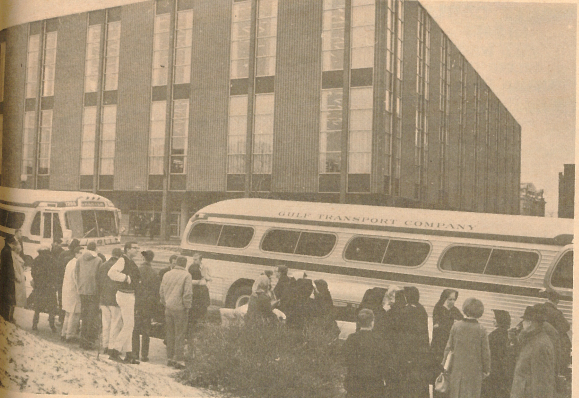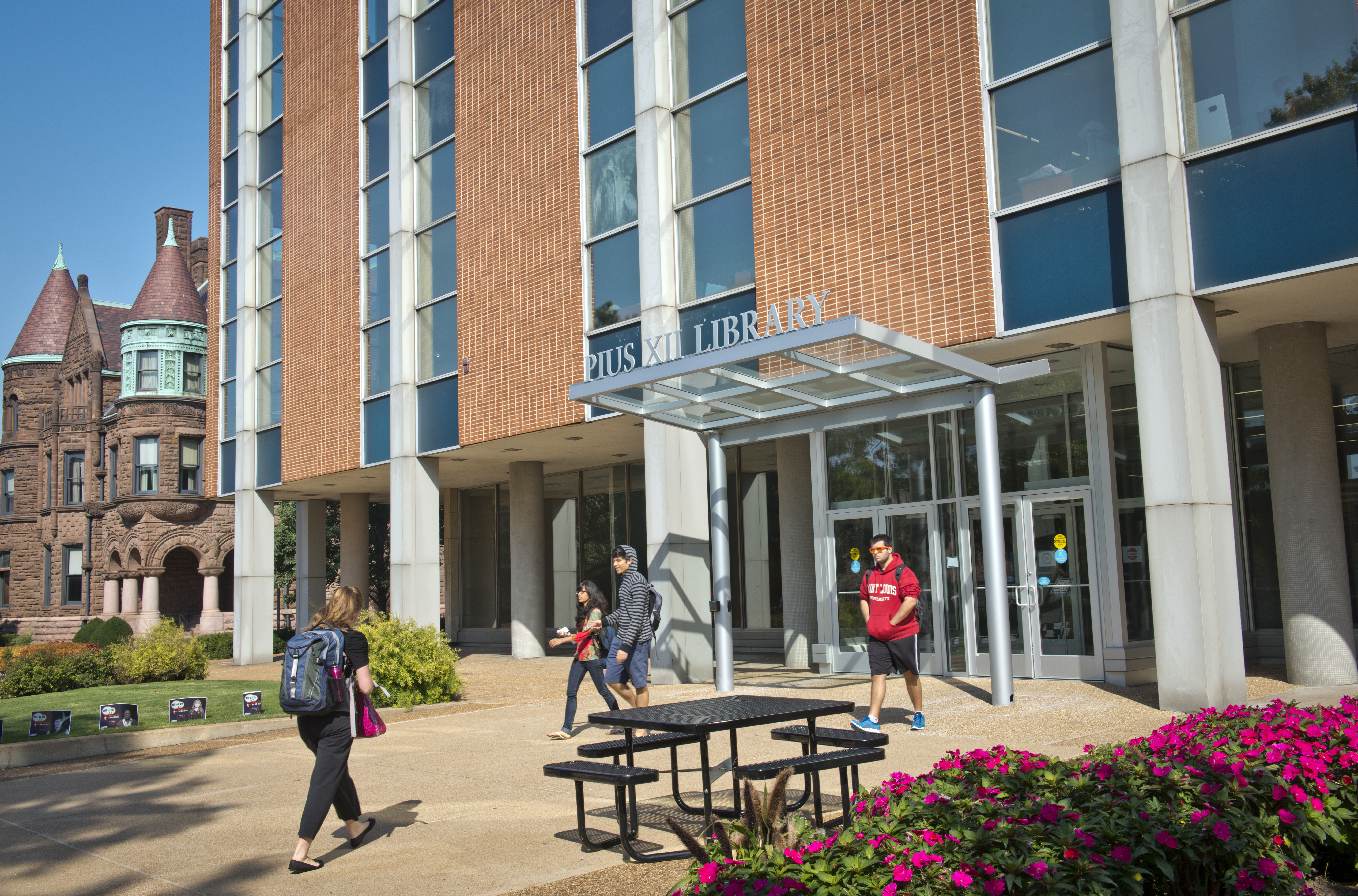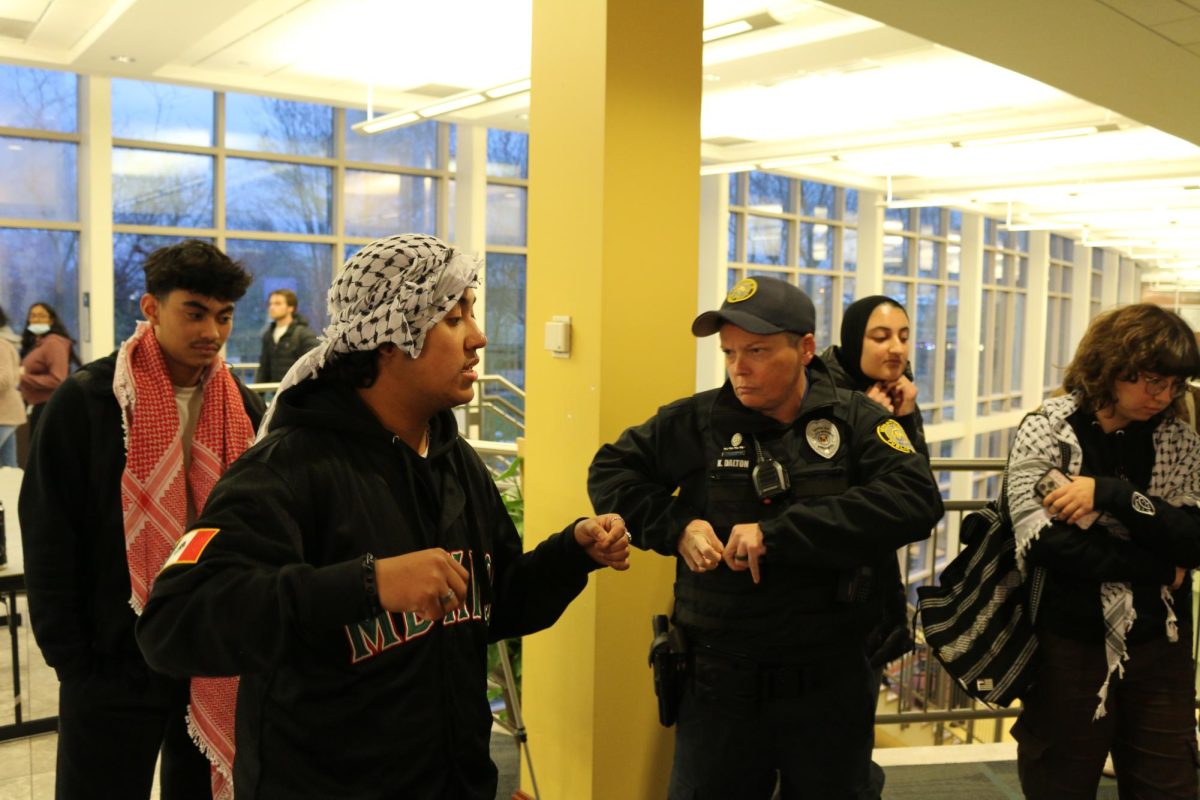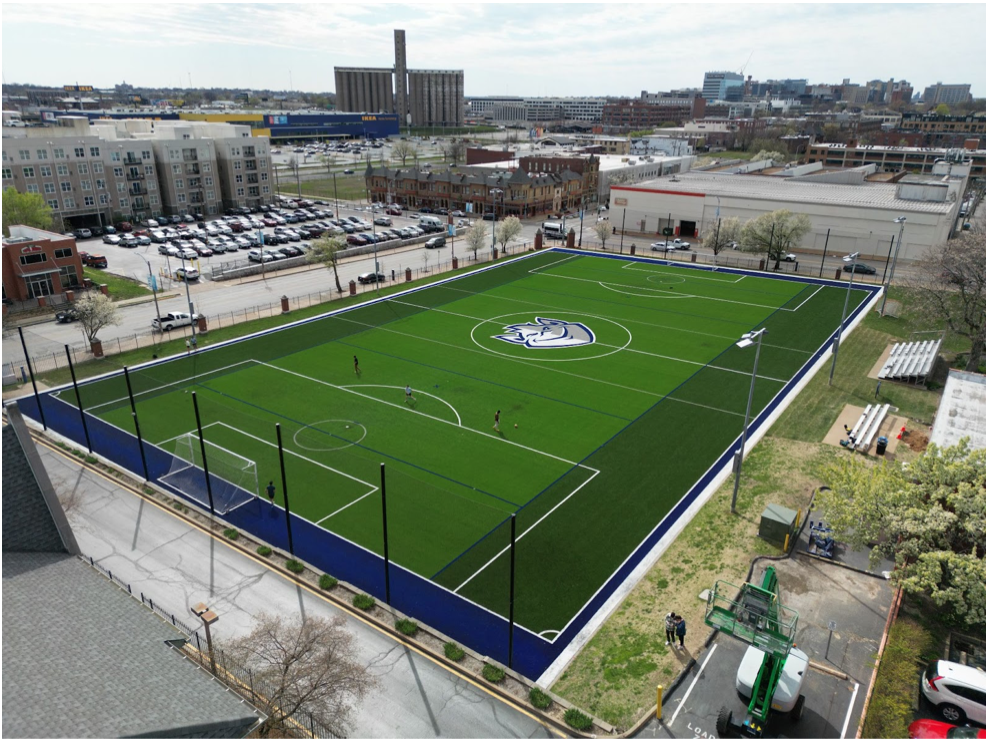

Top: SLU students boarded buses on West Pine that would take them to Montgomery, Al., to march with civil rights activists. Bottom: The street itself no longer exists, but students pass by Pius throughout the day.
50 years ago, West Pine bisected campus as we know it today. This thoroughfare served as the point of departure for more than 100 SLU students and faculty who boarded buses bound for Montgomery, Alabama. Destination: the Selma-to-Montgomery marches undertaken in the name of the decade’s tumultuous civil rights movement.
Writing for The University News at the time, James Lutz gave an eyewitness account of the bus ride and march.
“Morale was high throughout the trip down, but tension increased considerably as we advanced south,” he said. “We were advised to remove all sharp objects from our pockets including ball point pens in case of search by police. The all too familiar instructions on how to curl up in case of attack heightened trouble on the way down as much as on the way back. Our spirits were undampened by the rain which accompanied us most of the way. Songs and lively conversation helped create a group unity which, we were told, was important for our own protection in Dixie.”
The high spirits persisted into the march through Montgomery.
“The color line ended at the curb for all of us here. A sense of brotherhood was overwhelming. It was something like the liberation of Paris, the same welcome, kids grinning at you, plenty of waving and handshaking along the way. Green helmeted state troopers guarded the front of the Capitol building, but government troops were well dispersed throughout the city. There was little fear among the marchers while we were in the city.”
However, the violence that erupted between police and marchers produced some of the most enduring images from March 1965. Its aftershocks reached SLU, where 11 law professors drafted a “Selma Statement” condemning the “near barbaric dispersal of the protest marchers in Selma” that “must evoke in everyone but the most insensitive human beings a sense of utter outrage and frustration.”
“There are no circumstances mitigating enough to render inculpable the offenders in Selma,” they asserted. “Until even the idea of considering the color of a man’s skin in the evaluation of him as a human being is completely eradicated, America is a failure both as a democratic experiment and as a human society.”
That SLU students joined the struggle in the South appears, in retrospect, as the result of historical events on campus. Fr. Claude Heithaus, S.J., gave an impassioned homily in 1944, urging the University to welcome black students. Although his opinions brought opposition from Archbishop Glennon, Heithaus’ convictions, backed by a faction of black Catholics, were realized later that same year.
Manifestations of the 1960s civil rights movement on SLU’s campus were actually fruits of numerous tensions boiling beneath the surface. Expansion of area interstates facilitated the flight of white St. Louisans to the suburbs, in response to desegregation measures. Integration of the Fairgrounds Park pool faced pushback; a Grand Boulevard Woolworth’s was the site of a sit-in; and activist Percy Green scaled the Arch in July 1964 in response to black workers being barred from unionization.
“Part of the zeitgeist at the time was young people understood that things could no longer carry on as they had been,” said Dr. Stefan Bradley, professor of African American studies. “So this idea of delivering freedom rights and voting rights to African Americans was very popular amongst college students across the nation, including St. Louis University. So it would have been par for the course for St. Louis University students and those right-minded faculty and staff members to support the movement.”
“The people who participated in the movement were in the minority, and that’s because most people just wanted to get on with their lives, and they didn’t want to necessarily rock the boat,” said Bradley. “They might have been sympathetic and that sort of thing, but they certainly didn’t want to do anything that could potentially cause problems. That’s why it’s fairly significant, the people who did decide to participate, because they could have very well, very easily, not done anything and then rewarded for it.”
What made SLU such fertile ground? Bradley offered three explanations: “One, younger people are more open to ideas, and that’s one of the beauties of youth; two, African Americans had been attending SLU since ’44, so in some ways it kind of normalized the idea; and then, three, is we’re in a space where … we think about our fellow man … So with all those things combined, it paves the way for some action to take place … It just shows the power of youth, though … If you were to base it on the older generation, then things might have stayed the same for another fifty years, but these young people really pushed the issue, and that’s the saving grace of the nation.”





